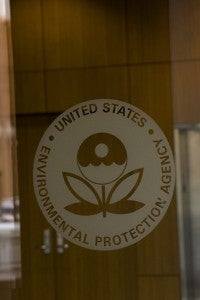Why EPA’s Press Release Doesn’t Reflect the Real Methane Emissions Numbers

At first glance, the Environmental Protection Agency’s Sept. 30 press release looked like a winner: Methane emissions from the oil and gas sector dropped by 12 percent in 2013, with a whopping 73-percent decline from hydraulically fractured natural gas wells making up the largest share of reductions.
The drop in methane emissions shows how effective regulation is in reducing air pollution from oil and gas production. It was led by an early phase of EPA’s air pollution rules, enacted in October 2012, with full implementation expected by January 2015. (Although this regulation targets emissions of volatile organic compounds, it has also reduced methane as a co-benefit.)
Except, the 73- percent decline is not the whole story. It only accounts for 2.3 percent of the total methane emissions reported to EPA’s Greenhouse Gas Reporting Program, leaving a large amount of tons on the table addressed.
Methane emissions went…up
What’s more, EPA’s data actually shows emissions went up between 2011 and 2013 in a variety of other activities associated with unconventional oil and gas production, such as pneumatic pumps and blowdown vents. Not a single federal air pollution requirement applies to these sources.
In other categories where emissions have increased, such as pneumatic devices (valves used to control oil and gas operations) and compressors, EPA has established standards for newly installed devices, but it doesn’t address the significant emissions coming from existing devices.
The biggest source, pneumatic devices make up one-third of total methane emissions and increased roughly 16 percent in the last couple of years – a fact that EPA’s press release omitted.
Bottom line: The problem is far from solved, and much work remains to be done to ensure methane emissions aren’t undermining climate and clean air goals.
Why methane mitigation cannot wait
Methane pollution takes a considerable toll on our climate. It’s more than 84 times more damaging to the climate than carbon dioxide over the first 20 years after being released.
Today, methane accounts for roughly one-quarter of warming globally. In the United States, the oil-and-gas sector is the largest industrial source of such emissions.
And that’s not all. These emissions are often co-mingled with volatile organic compounds and a variety of hazardous air pollutants. Methane emissions, particularly at well sites, often mean harmful air pollution affecting communities surrounding oil and gas wells and downwind.
A significant cut in oil and gas methane pollution, using low-cost, available technologies, is possible and could go a long way to cool the climate and better protect the health of communities from other pollutants that cause cancer and trigger asthma attacks.
Strong methane regulation is a win-win
EPA can slash methane pollution from the oil and gas industry by 40 percent by taking immediate action with direct regulation.
Proven, low-cost technologies are already commercially available to cut emissions. Things like replacing or retrofitting higher-emitting pneumatics with lower or zero-emitting models and operators using equipment to frequently check for leaks at well sites, compressor stations, and other facilities to then repair these quickly.
Earlier this year, President Obama directed EPA to evaluate the best ways to reduce methane emissions from the oil and gas industry, as part of the White House methane strategy. Administrator Gina McCarthy is expected to make a decision on federal methane rules this fall.
Voluntary efforts from the oil and gas industry aren’t enough to achieve needed methane reductions to slow their climate impact, the EPA Inspector General concluded recently. EPA has the legal authority and responsibility under the federal Clean Air Act to reduce this harmful pollution.
American companies and American workers are ready, willing, and able to provide the technology and services oil and gas companies will need. We have a robust and diverse methane mitigation industry in place already at 500-plus locations in 46 states.
With the right policies in place, local economies will grow and create new American jobs in the very communities impacted the most by this pollution. Now that’s something to be happy about.











